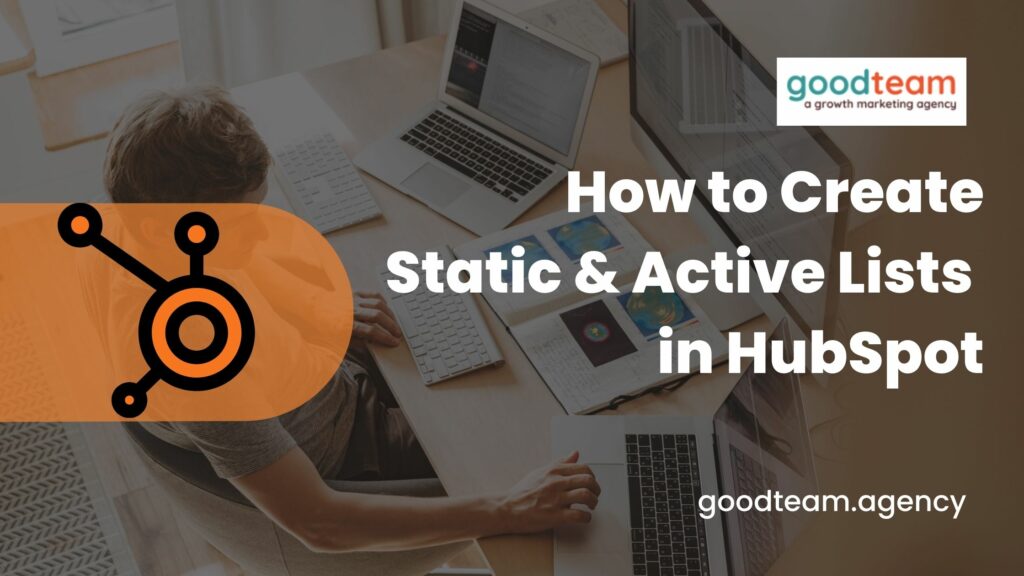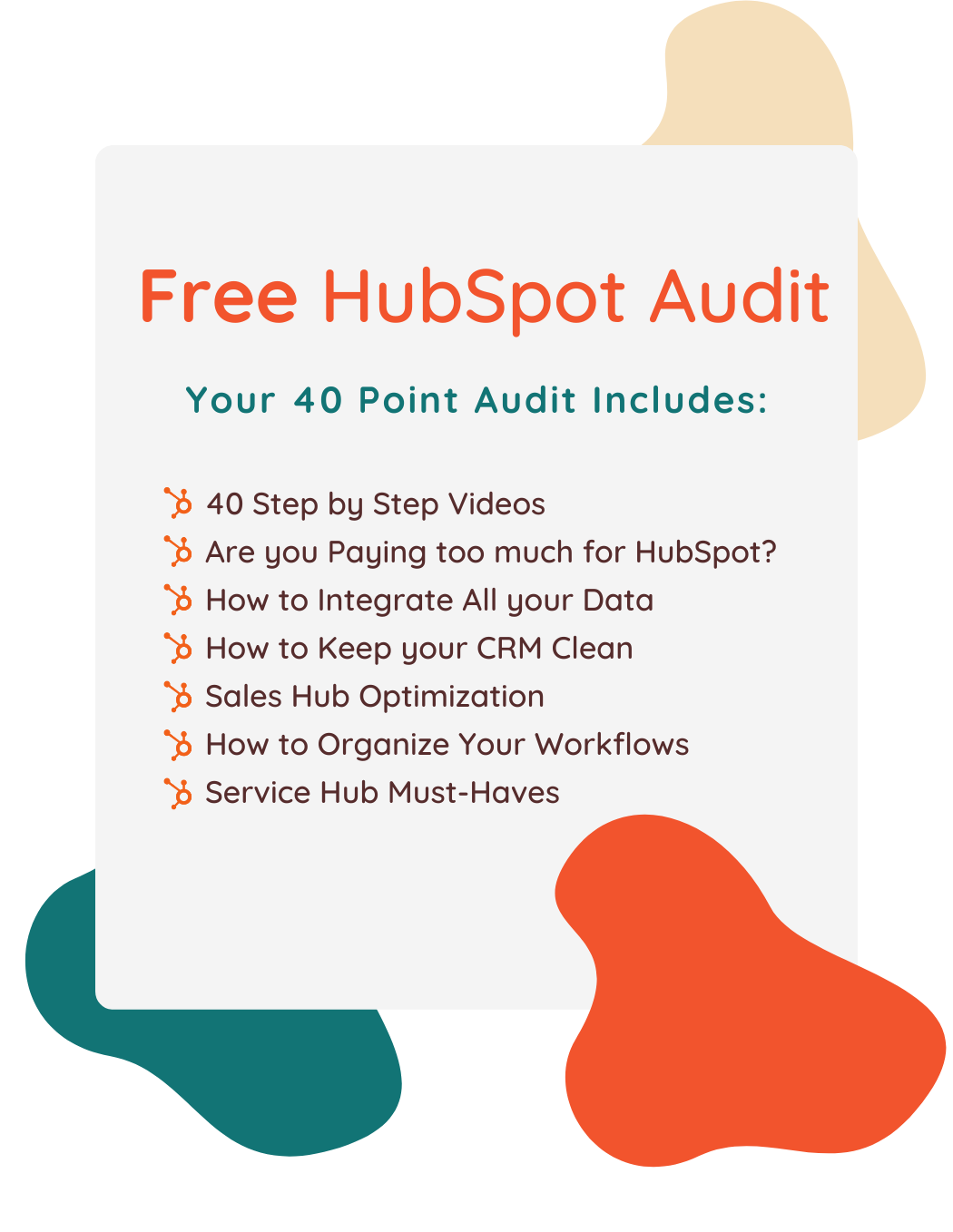Static and Active Lists in HubSpot | What is the Difference and How to Create Them (Video)

Written by
Good Team
Created on
May 12, 2022
Static and Active Lists in HubSpot, What’s the Difference and How to Create them
If you’re familiar with any CRM or email management system used for growth marketing, you’re probably familiar with lists. So what are static and active lists in HubSpot?
Lists are how HubSpot helps track your contacts.
Two types of lists are:
Static- Your traditional marketing list where you have to manually add and remove them. You set and forget.
Active- A newer type a list where HubSpot adds and removes based on an action.
Watch this video on how to create static and active lists:
To add lists go to:
- Contacts
- Lists
- Import (Static List)/Create a new list
- Add filter (similar to workflows)
- Save List
That’s it! Now you know how to create static and active lists in HubSpot and their differences.
What is Good Team?
Good Team is a HubSpot Partner Agency, as a Certified Solutions Partner with HubSpot we are committed to helping companies grow better. We do that in many ways: Management, Projects, Support, or Resources.
Fill out the form below to access our 40-point DIY HubSpot Audit with Videos!
If you aren’t able to watch Static and Active Lists in HubSpot | What is the Difference and How to Create Them, read the captions here:
Hello this is Frances from.
I’m showing you how to create a
static list and an active list
and explain the
differences in the two. So if you’re familiar with
CRMs or really any sort
of email management
system, you probably
are familiar with lists
and maybe even tags.
The way that HubSpot
is able helps
you track contacts is through a
static list and an active list,
which is pretty much
what it sounds like.
A static list is kind of your
traditional marketing lists.
It’s a set number of people.
And if you want
to remove someone,
you have to manually
remove them.
If you want to add, somebody’s
got to make you add them.
So that’s kind of
your classic lists
where you set and forget an
active list is a newer style list where if a
contact takes an action
or make some sort of indication
that they whatever trigger you
want to set on it, it will
constantly upload the list.
So HubSpot will automatically
add and remove contacts
based on the action
that you set.
So if you want to
accomplish this,
what you’re going to need to
do is go to contacts and lists
in your portal.
And you can either
import your list
or create a new list
based on contacts
that are already in your CRM.
Something to note if you
decide to import the list,
it will only be saved
as a static list.
You cannot create active
lists based on imports.
So for this example,
I’m going to create
a contact based static list.
Based on folks who have
opened a marketing email.
So if someone has ever
opened a marketing email,
I want them to be
added to this list.
Something also to
note the difference between static and active list. Static is more.
Let’s think about
thing actions that
have happened in the past
and static lists excuse me,
active lists are
actions that are
going to happen in the future.
Right so.
Static test email opens.
So I’m going to call this
and make sure to select
static list there.
And then you’re going
to add the filter.
So the filters here work
very similarly to the way
that they work in workflows.
It’s just conditional logic.
So for this static
list, what I want to do
is I’m going to be tracking
contact properties.
And again, I want to see who
has opened a marketing email.
So I don’t really
care about segmenting.
I just want to know ever who’s
ever opened an email from us.
So I’m going to say the
first group we’re tracking is
marketing emails is equal to.
Known, meaning
that HubSpot needs
to find anybody who has the
null value marketing email open.
Right you can go
pretty deep into this,
adding multiple groups
and multiple filters
within those groups.
But for this example, we’re just
going to do that one filter.
And I want to know who
is open marketing emails.
A preview will populate here.
Just so you know, we don’t
have any contacts in this hub,
so there’s nobody there.
Once you’re done, you’re
just going to hit Save list
and you’ll see if you
go back to your lists,
there is your static list.
So you can see here that it’s
a static list and it’s contact
based.
Very similarly, we’re going
to be creating a active list.
We’ll call it test active.
And simply contract
based on the active list.
Click next.
Apply the exact same
filter contact property.
Last marketing email open.
Is known.
With that population,
it’s probably
going to get messed up because
we’ve got the same thing going
on here.
Save and you’ll see.
You’ve got an active
list and a static list.
So with that static list, it
will only be up to the point
that you created the list.
Those contacts will be
added with the active list.
Any time someone opens
a marketing email,
they will be added to this list.
So a great way to use these.
Think about a static list
or your traditional lists.
If you’re just trying
to upload a specific
maybe it’s leads
from an old CRM,
you just need to bring
them over to the new CRM.
You don’t really want to
mess with anything other
than knowing that these
are the old leads,
but maybe as a contact is
moving through their journey,
you speak to them differently.
You’ve got cold, warm
and hot leads lists.
Active lists are a great
way to keep them segmented.
One way that we
use them is to know
who we need to be sending
marketing emails to.
So if someone is engaged
with our content,
we want to be sending
them more content.
They’re unengaged
with the content.
Then we don’t want
to send them content
because they’re not opening it.
We don’t want to annoy them.
So we have a list that is
active marketing contacts
and inactive marketing
contacts, and we speak to them
very differently.
So that’s the difference
and how to create
active and static
lists in HubSpot.
Get Your Free DIY 40-Point HubSpot Audit with Videos!

